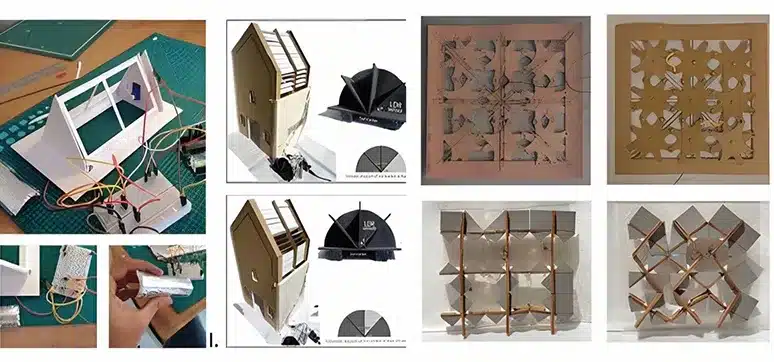The façade plays an important role in a building as it is the primary interface between the interior and exterior. The façade therefore becomes the crucial element that manages entry for light, heat, sound, dust and a view to the world outside. Additionally, it sets the tone and theme for the design as it is a visual statement for the entire building, like a cover wrapping the book.
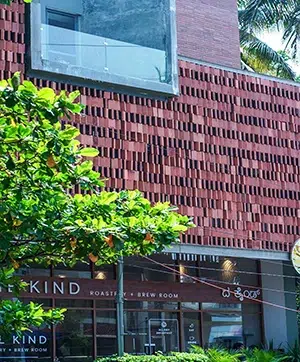 Especially in the case of public buildings where people enter into an unknown context, the façade can play a role architecturally to invite or ward away, to tower above or to stay grounded, to look rigid or feel playful and the like. From the point of view of sustainability, façade and roof design are of paramount importance in cutting down energy needs. The approach to façade design can be vernacular, that is, using locally available materials and construction technology.
Especially in the case of public buildings where people enter into an unknown context, the façade can play a role architecturally to invite or ward away, to tower above or to stay grounded, to look rigid or feel playful and the like. From the point of view of sustainability, façade and roof design are of paramount importance in cutting down energy needs. The approach to façade design can be vernacular, that is, using locally available materials and construction technology.
This generally tends to be energy-conservative, resource-efficient and able to boost the local economy. However, the contemporary world may demand a different aesthetic that can suit the modern context and lifestyle. As office spaces and commercial outlets look for larger glazed façades, one encounters the problem associated with excess heat gain in tropical latitudes. The perfect balance of optimal lighting levels to minimal heat gain is sought out.
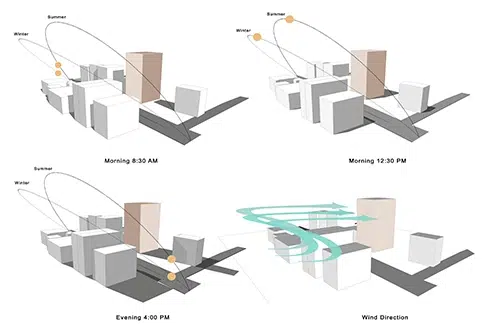
Architects perform climatic studies to arrive at the correct orientation of the building in the given region and context. Further, one must assess the availability of views outside, visibility to the skyline and the character of the light to be admitted inside the space. It is well documented that the availability of natural light and ventilation, and the access to views of the outside have a positive influence on the occupant’s well-being and productivity. The percentage of window-to-wall can also be analysed using energy modelling applications to arrive at an informed decision. Such models allow architects to compare the proposed design with a base case scenario averaged out for annual performance.
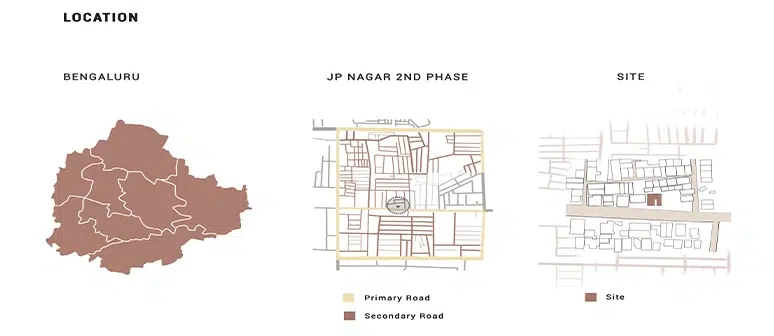
Advances in technology and analysis tools have led to a shift in façade making. Performative façades that respond to the real-time external or internal environments are effective in modulating design. For instance, the façade apertures may open and close, much like the pupils of the eye based on sensing the intensity of light. The awning systems may retract or protract based on the amount of direct light one wants to admit inside and these may be set to correspond with the sun angle. Such a dynamic façade speaks directly to the natural elements and can provide optimal lighting and heating conditions for the interior space. The dynamic façade system can be achieved through programmed microcontrollers that operate the elements.
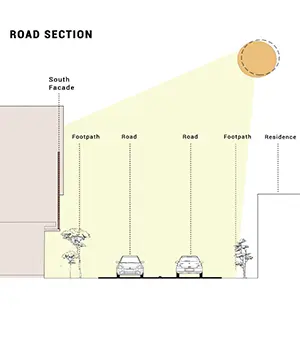
Such a dynamic façade speaks directly to the natural elements and can provide optimal lighting and heating conditions for the interior space. The dynamic façade system can be achieved through programmed microcontrollers that operate the elements. Alternatively, one can employ specialised materials that are sensitive to temperature changes and exhibit the shape memory effect. A façade made using shape memory alloys can transform without the use of an energy source but uses the sun’s heat as the stimulus for response. Such an alloy has the property of remembering the initial shape provided to the material and exhibits the property of returning to the initial form as a response to temperature.
Lighting and maintaining thermal comfort are the two functions that use up nearly 85 percent of the building’s energy needs. Here, the façade designed to allow sufficient natural light and ventilation play a prominent role in green building design. The use of operable windows ensures air movement and reduces the need for air conditioning. Designers can play with fenestration size and orientation to alter wind velocities.
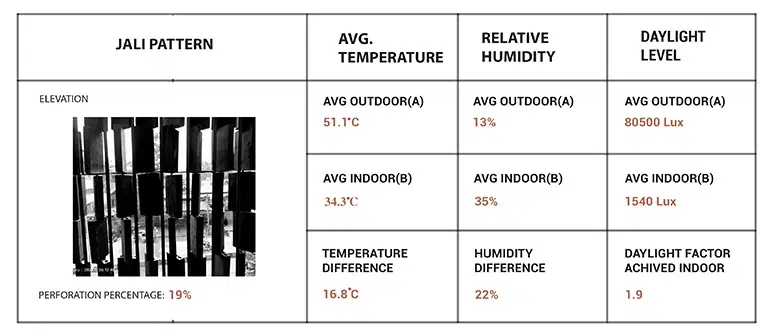
The façade is akin to the skin. Based on the climatic requirements, the façade should be able to shield the interiors from heat, cold and precipitation. A good skin can also preserve the interior heat in a cold climate or keep the interiors cool in hot and dry external conditions. To achieve thermal comfort in an extreme climatic zone, higher thermal mass can be opted to reduce heat transfer through conduction. The use of a second skin wall works as a shading element to cut off harsh and direct sunlight
Case Study
Sun Chime: A Mixed-Use Project JP Nagar, Bengaluru
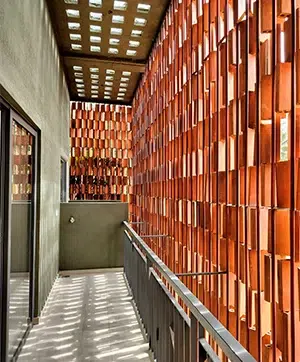
wall and shields the building from the
direct south sun
Located on a medium-intensity vehicular traffic main road in central JP Nagar, Sun Chime is a multi-storey commercial and residential complex, nested amongst other commercial establishments and places of worship surrounding it. The project faces the South side of the main road 60 feet wide and receives ample sunlight on its south façade. As the building houses 6000 Sq ft of commercial space, the façade was designed to draw people’s attention as an interesting and inviting space.
The façade is composed of glass, solid concrete masonry and a clay block latticework or jali. The walls and fenestrations in the residence levels are sheltered behind the jali work. Such a secondary skin shields the interiors from direct sunlight. While cutting out heat, it is able to bring light to the interiors, creating a dynamic play of patterns on the floor.
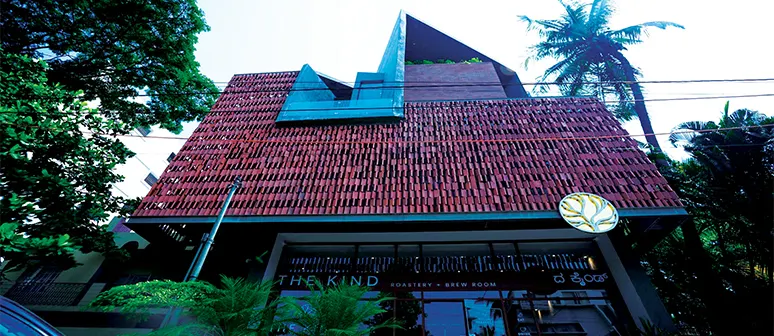
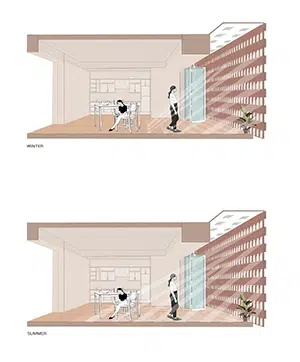
As the air passes through the smaller apertures of the jali wall, it moves with a higher velocity due to the Bernoulli-Venturi effect. The air velocity for a given volume of air increases through a smaller cross-section area of opening size. An increase in air velocity causes a drop in pressure and has a cooling effect on the interior space. Apart from temperature and wind velocity regulation, the jali wall functions to provide visual privacy, yet allows natural light based on aperture size.
The façade detail combines a contemporary design juxtaposed with concepts from traditional architecture resulting in a unique new identity. The hollow clay blocks are stacked between steel rods fitted onto a metal frame. The latticework of the façade has a perforation percentage of 19 %. Climatic data was collected between 12:30 to 1:30 pm on a sunny winter noon in the month of December.
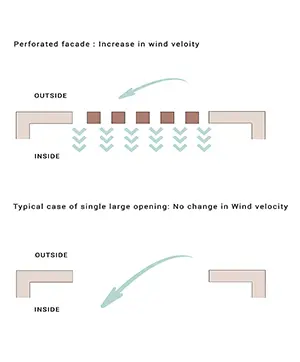
The average temperature difference between the exterior(A) and a point(B) on the interior space 3 feet away from the façade was noted to be 16.8 degrees Celsius. The daylight factor was found to be 1.9. The interior was found to be in the thermal comfort zone even though external conditions were hot and dry. The researchers were able to perceive low-velocity air movement passing through the jali into the indoor space. It must be noted that the study has limitations of being unable to isolate the effect of Jali work alone and the thermal conditions in the interiors are also influenced by other factors such as the roofing and thermal protection provided by the upper-level built mass.
Quick Facts:
- Project: Sun Chime – A mixed-use project
- Location: JP Nagar 2nd Phase, Bangalore
- Client: The Kind Roastery & Brew room, private residences
- Architect: Mud Hands architects
- Other Consultants: Opera Homes Developers
- Materials used for façade & fenestration: Clay Blocks, Steel and concrete masonry
- Commencement Date & Completion Date: January 2020-January 2022
